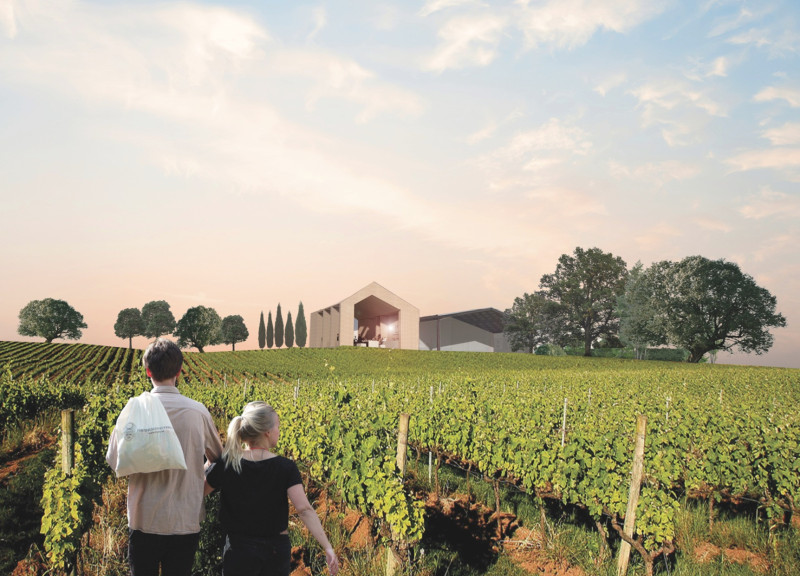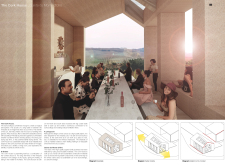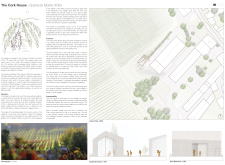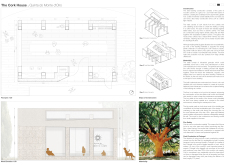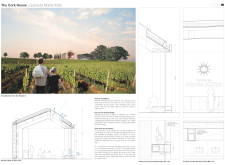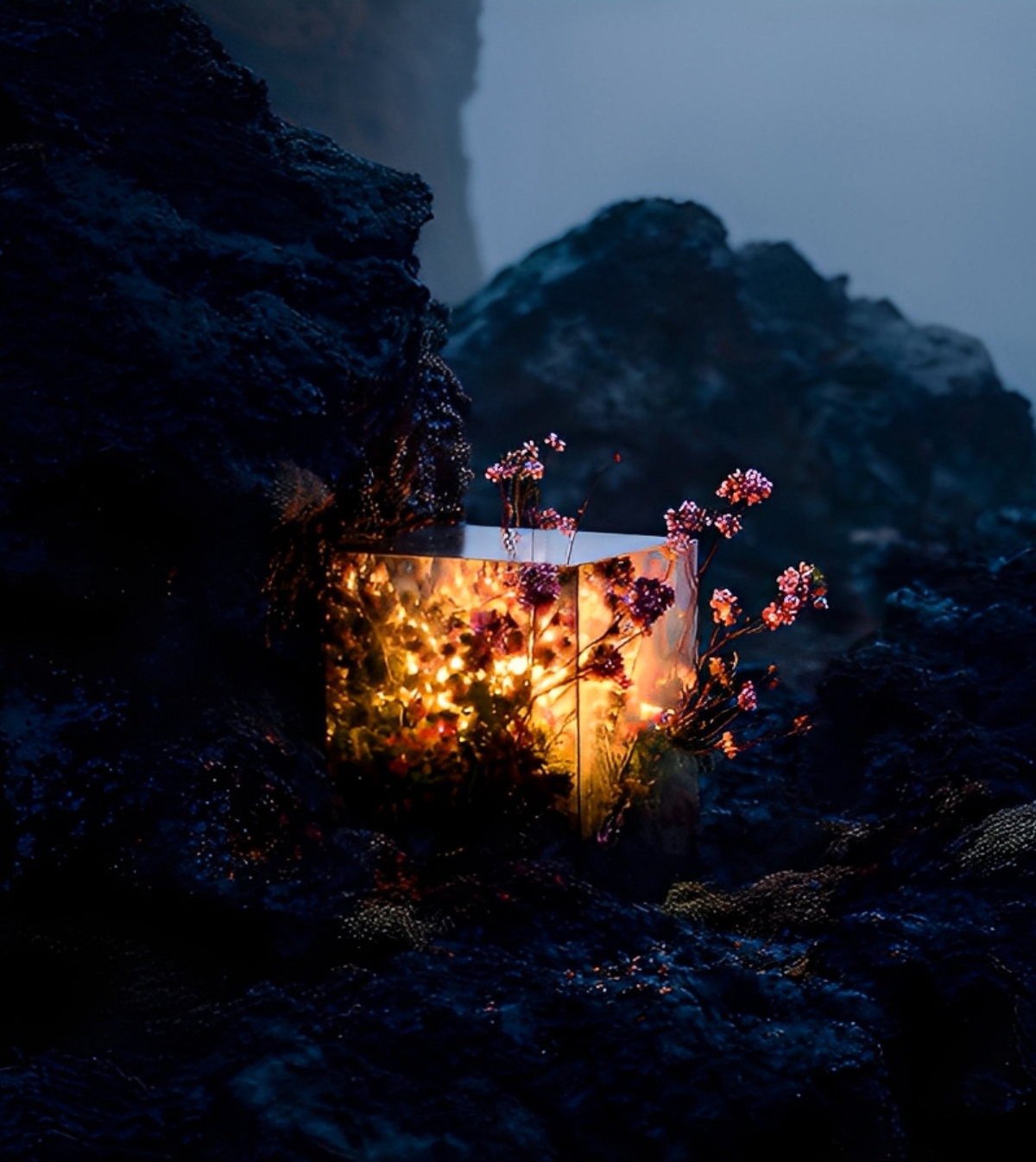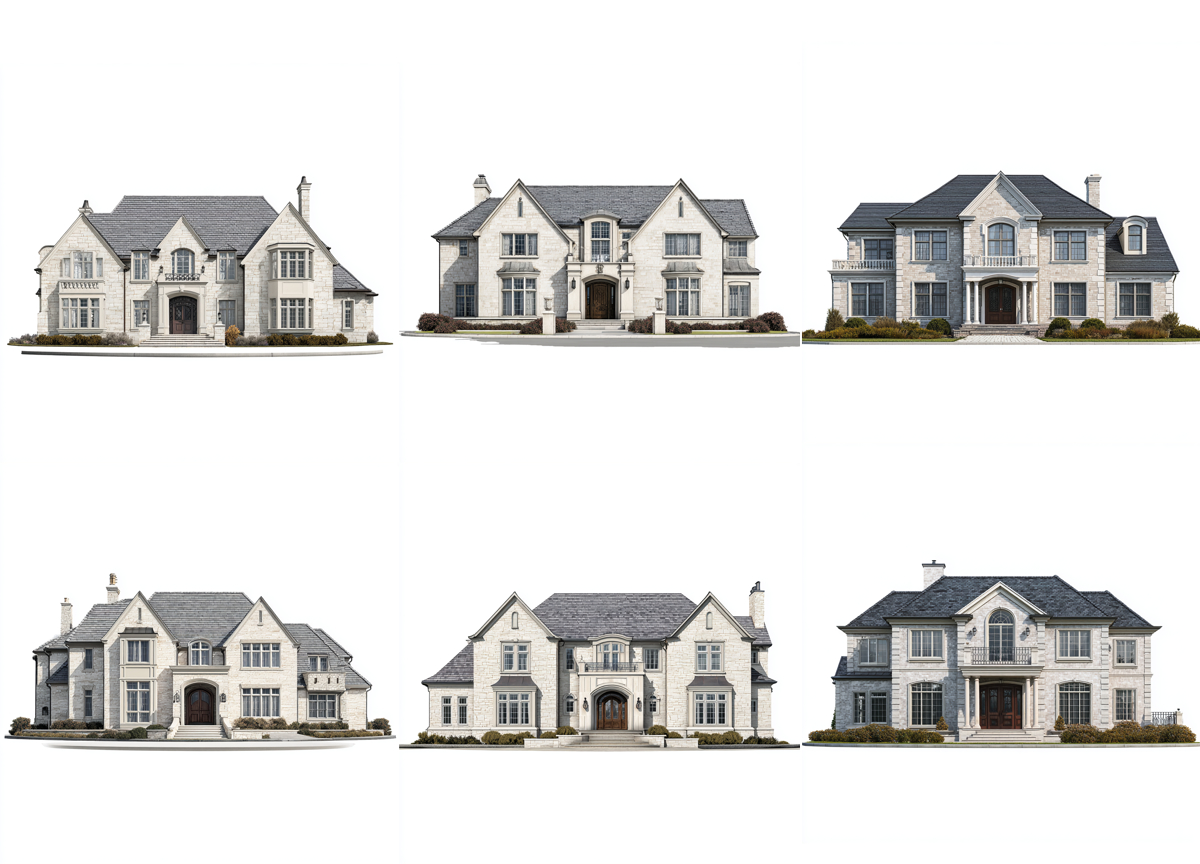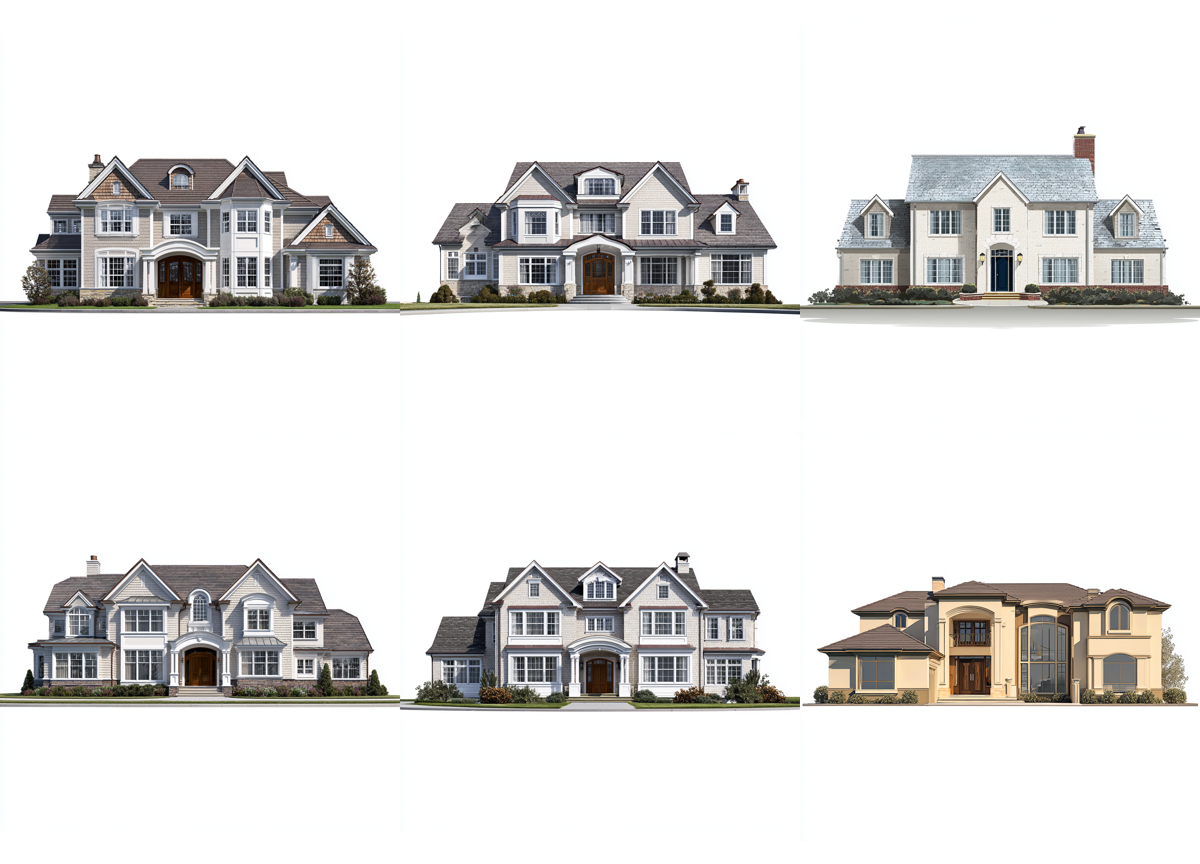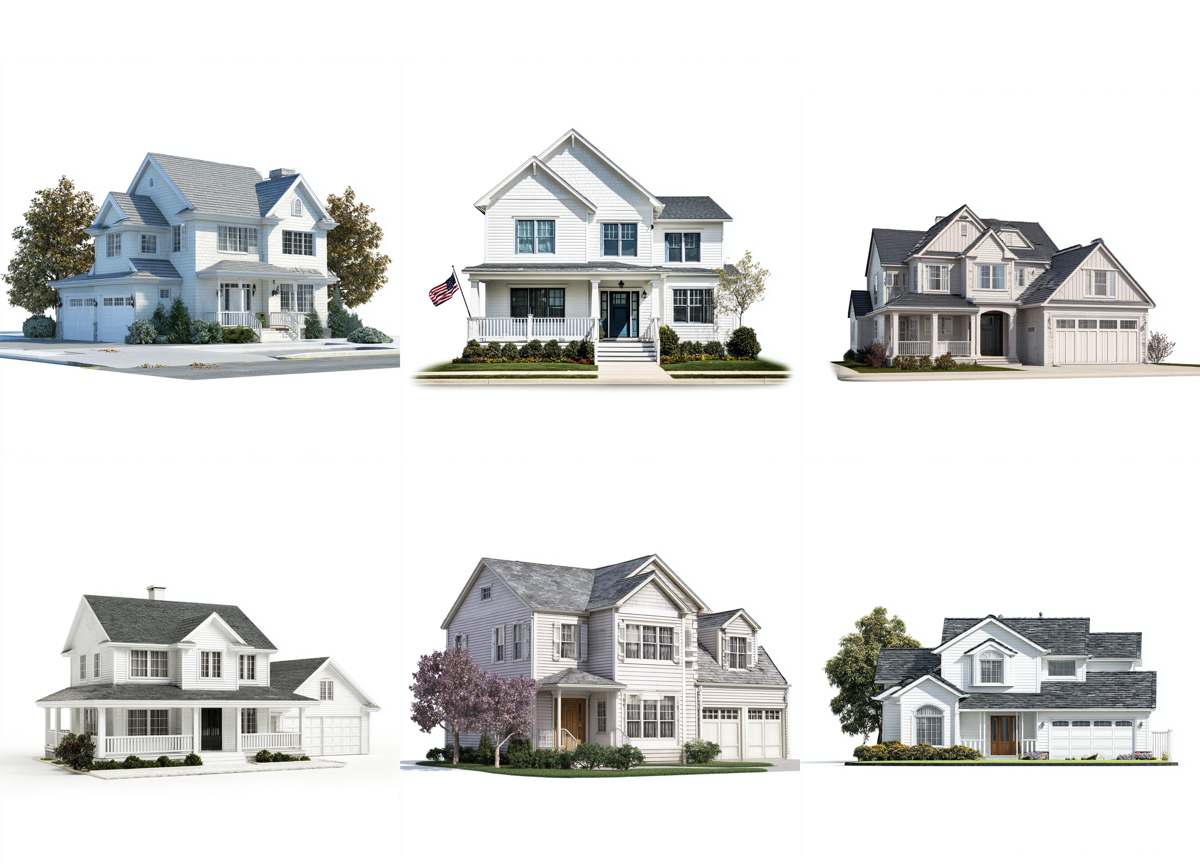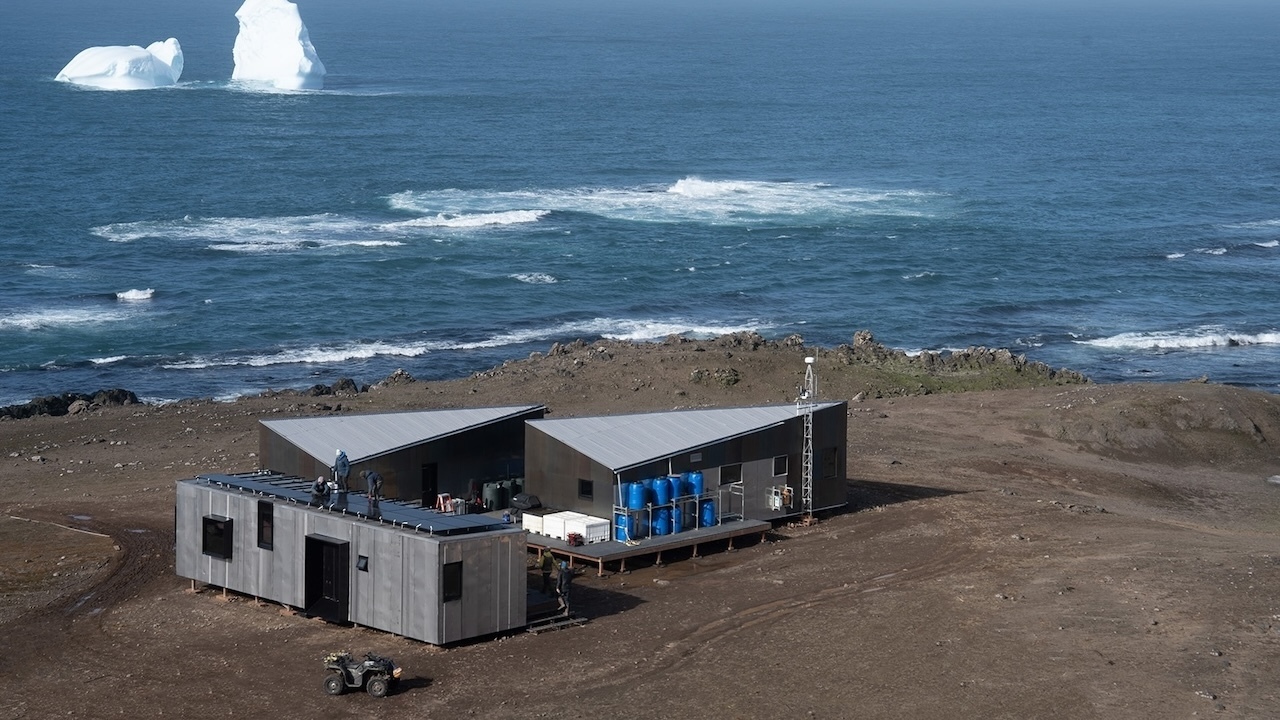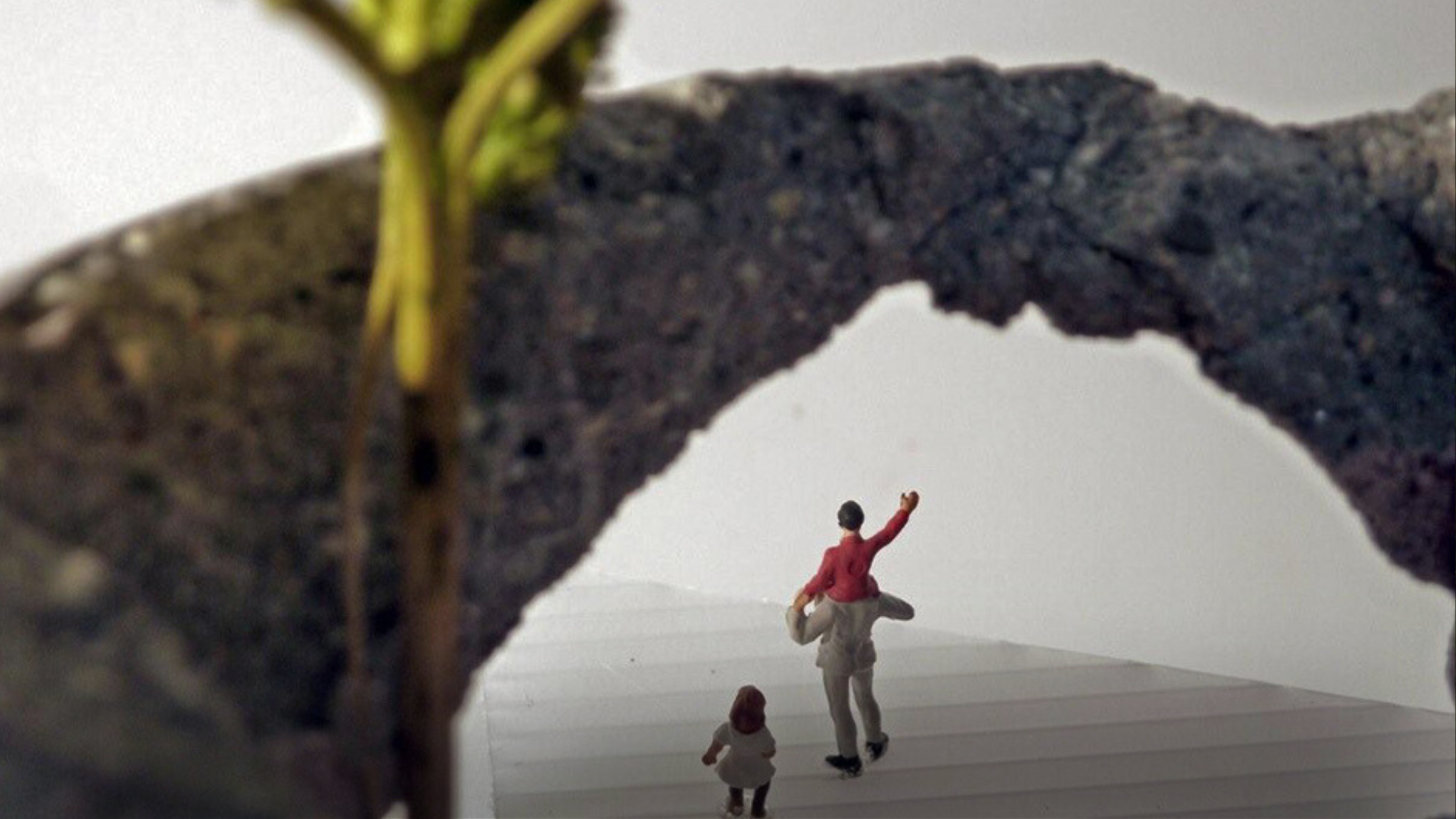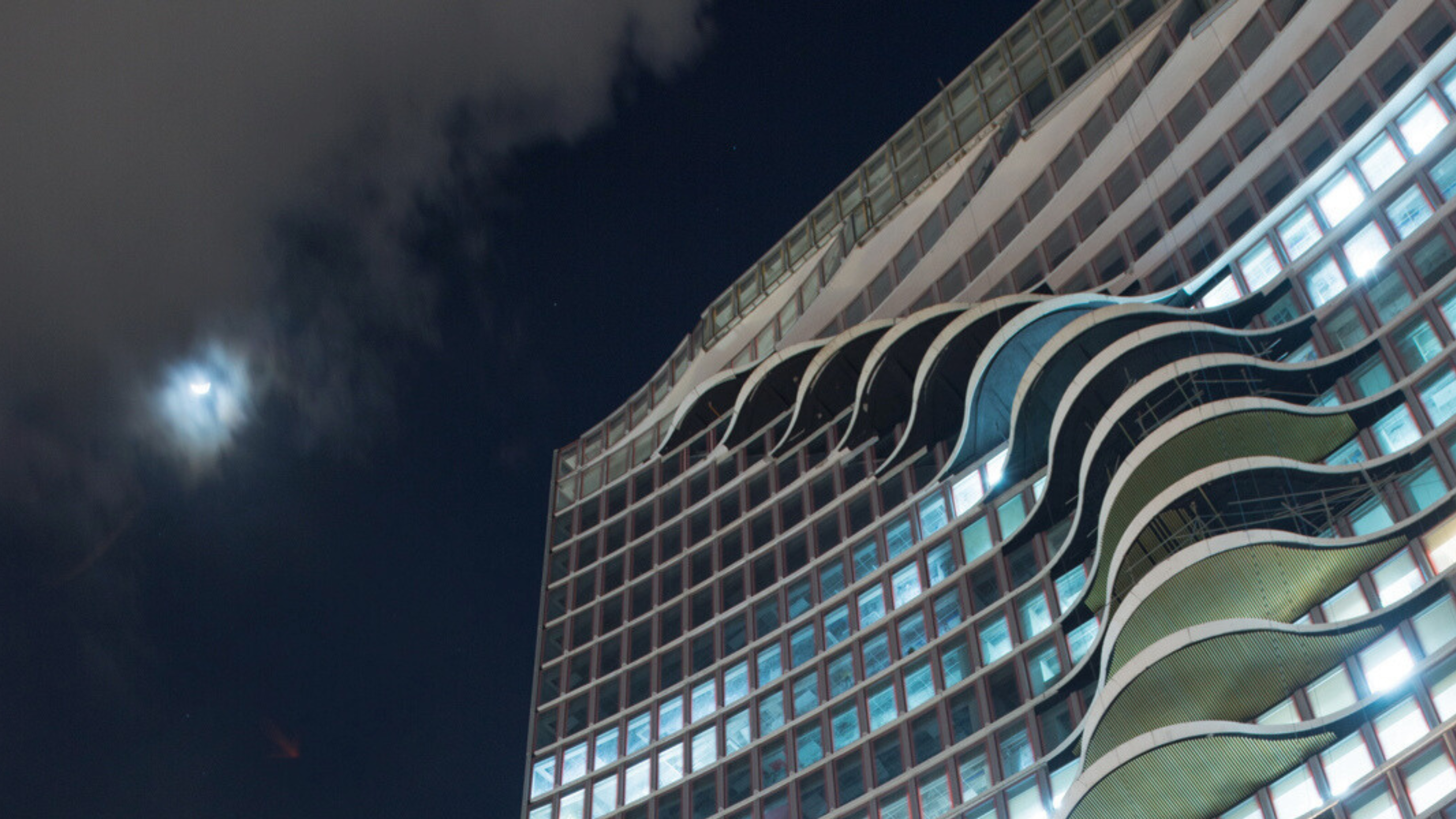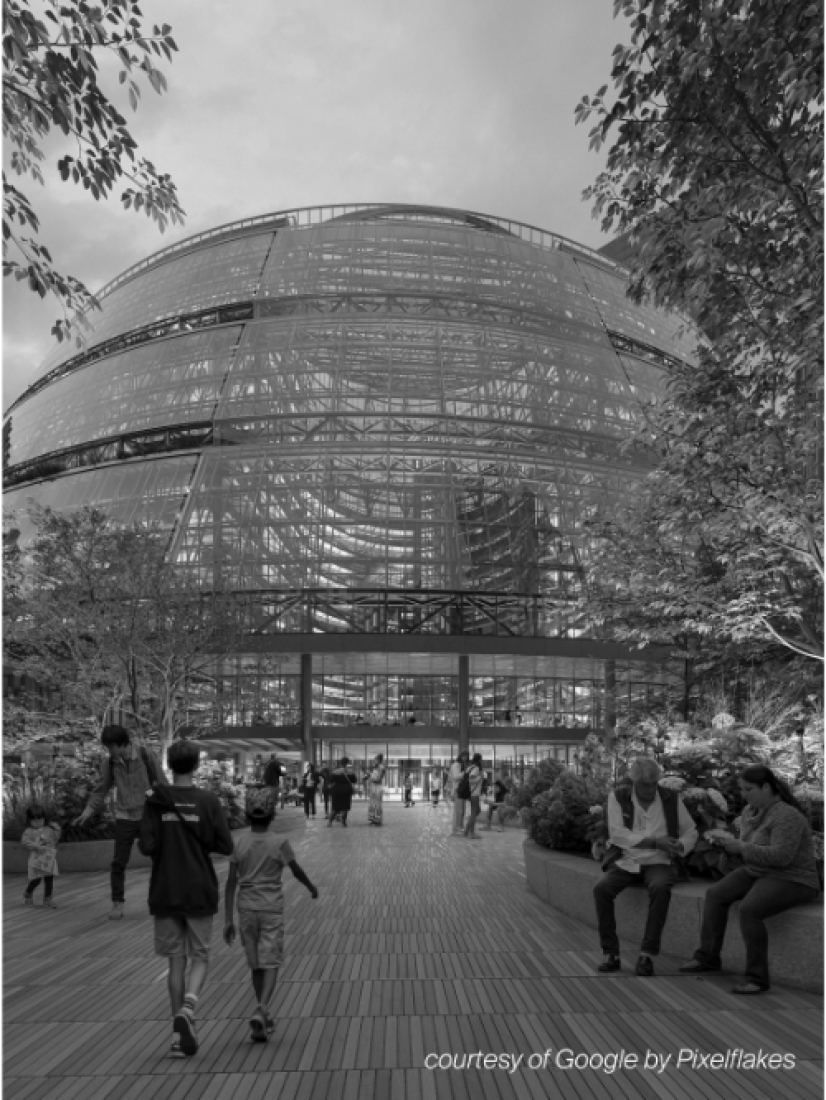5 key facts about this project
The Cork House is located in the vineyards of Quinta do Monte d'Oiro in Portugal. Designed with sustainability in mind, it serves as both a gathering space for events and a practical area for everyday winery activities. The main idea behind the design is to create a structure that adapts to the changing weather while maintaining a strong connection to the surrounding landscape.
Design Integration
The architecture of the Cork House fits well within the agricultural environment, enhancing the views of the vineyards. Large curtain walls on the North and South sides allow natural light and airflow to enter, promoting a strong indoor-outdoor relationship. This approach creates a comfortable space for social interaction while keeping a connection to the fields.
Materiality and Sustainability
Cork emerges as a key material in the construction of the Cork House, reflecting a dedication to environmental responsibility and local resources. This material provides good insulation, making the interior warm and inviting. The use of local materials throughout also reinforces the building's ties to the landscape, supporting ecological practices in the area.
Functional Spaces
The layout of the building is designed to serve various functions, from hosting events to daily wine tastings. Specific areas, such as the tasting room and kitchen, are planned for efficient use. A wine wall for storage and display underscores the link to the winery’s offerings, enhancing the visitor experience.
Architectural Expression
The gabled roof design connects to local architectural traditions while still appearing modern. The roof, along with large glass walls, encourages natural ventilation and brings in daylight. This reduces the need for artificial lighting and climate control systems.
The facade features a structural rhythm created by the curtain walls. They frame views of the vineyards and protect against weather elements. This balance between transparency and solid structure gives the Cork House a distinct character, reflecting its setting and purpose.


